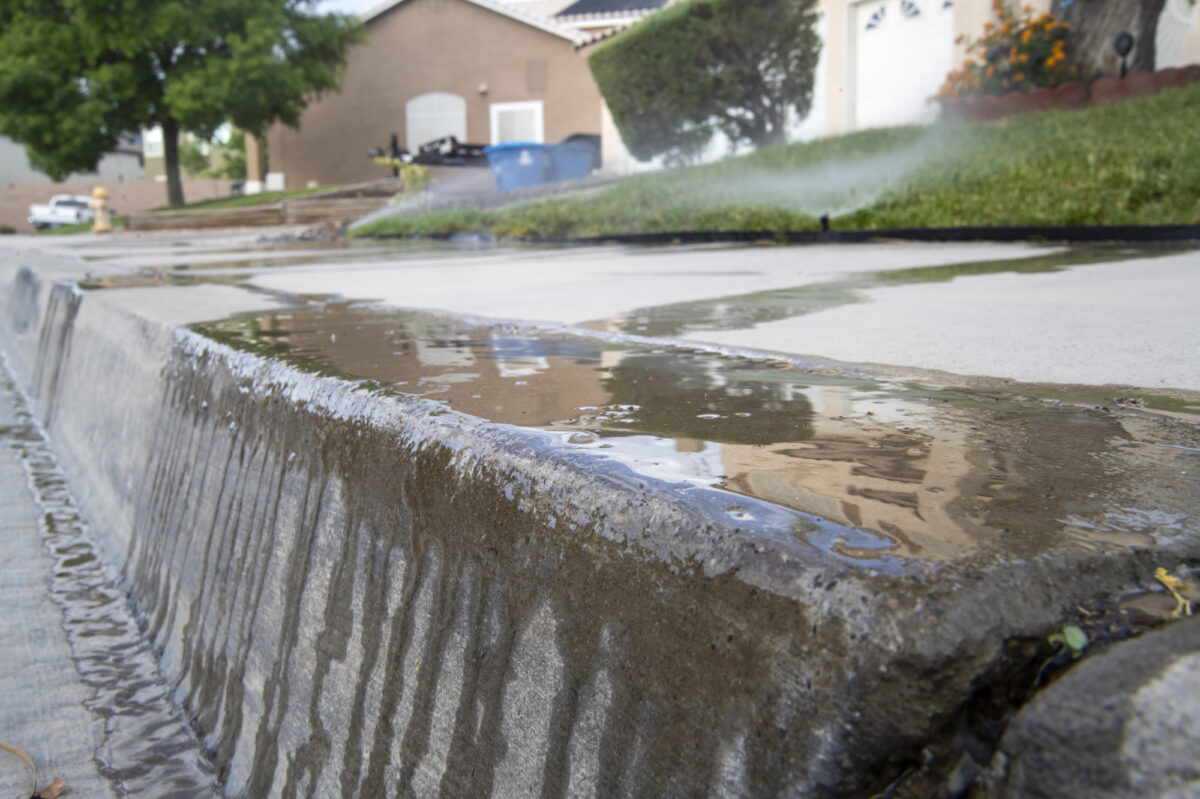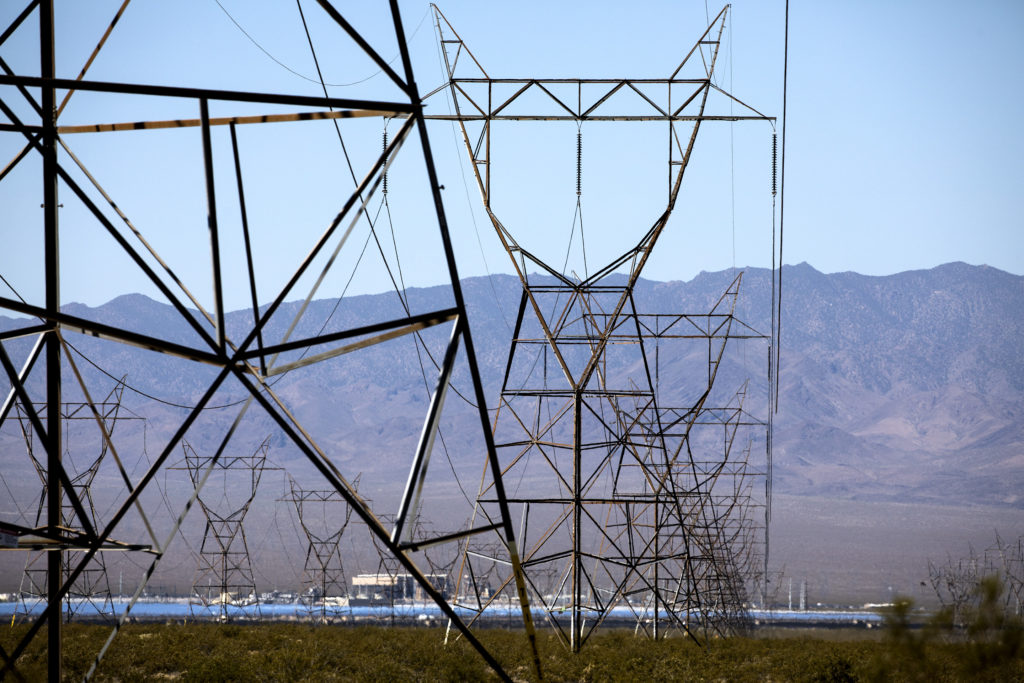Inside Las Vegas’ legislative push for tools to reduce water use before any big cuts come

Good morning, and welcome to the Indy Environment newsletter.
As always, we want to hear from readers. Let us know what you’re seeing on the ground and how policies are affecting you. Email me with any tips or suggestions at [email protected]
To get this newsletter in your inbox, subscribe here.
In 2021, at a Colorado River conference in Las Vegas, the Southern Nevada Water Authority laid out an ambitious and detailed plan to lower per capita water use through conservation. The presentation quantified why deep municipal conservation — limits on decorative grass, pool sizes, golf courses, septic tanks and landscaping — was necessary to adapt to a far drier future.
It was a signal that Las Vegas planned to go all-in on conservation. Part of this was necessity. Of the seven states that rely on the Colorado River, Nevada has by far the smallest allocation. It is also one of the urban centers most reliant on the river, the source of 90 percent of its water supply.
Part of the plan was to shore up water for more growth. The conserved water could, in effect, serve as a source of new supply as more people move to the Las Vegas Valley — a way to stretch out a limited portfolio. And a major part was to prepare for an uncertain future within the confines of a complex set of Colorado River politics and law that often prioritizes agricultural, not urban, users.
Even before 2021, Las Vegas had emerged as a leader in Colorado River conservation — and it achieved much of its success through incentives, including a program that paid cash for ditching grass. Yet providing incentives turned out to be the easy part, a way to address the low-hanging fruit. The deeper conservation Las Vegas had its eyes on required changing state law.
The presentation in 2021 came months after the Legislature passed a bill prohibiting the use of ornamental turf, water-guzzling grass with no functional purpose except to serve as a decoration along streets, medians and inside roundabouts. Now, the Southern Nevada Water Authority is proposing another piece of legislation, AB220, a bill that aims to double down on deep municipal conservation.
“As we look to a hotter and drier future for Southern Nevada, we know that we need some additional tools in our toolbox to manage our demand — and to be able to face the uncertainty that's coming on the Colorado River,” Colby Pellegrino, the water authority’s deputy manager, said Tuesday afternoon before a two-hour hearing on AB220.
The legislation, a nearly 40-page omnibus bill, would allow the water agency to curb excessive water use in times of emergency, give officials more oversight in approving development maps and create a voluntary compensation program to transition customers away from septic tanks.
AB220 would also give the state more authority to regulate groundwater in Las Vegas Valley, where there are more legal entitlements to use groundwater than there is water to go around.
The legislation passed out of the Assembly 30-12 with bipartisan support. To become law, the bill now must be approved by the Senate and be signed by Republican Gov. Joe Lombardo.

Under extreme shortage conditions on the river, AB220 would permit the water agency to restrict how much water large customers can use — one of the most contentious elements of the legislation. The legislation would cap annual use at 0.5 acre-feet, or about 163,000 gallons, an allotment that is more than the average water use for 80 percent of all residential customers.
An acre-foot is the amount of water that can fill one acre to a depth of one foot. A half-acre foot is the same guaranteed amount of water given to domestic well users during times of shortage.
That volume of water, according to Pellegrino, would provide for health and human safety. The main driver of high water usage in residential homes, she said, is “almost always turf irrigation.”
But some pushed back Tuesday’s hearing, including from the community of McNeil Estates, which dates back to the 1950s. Laura McSwain, the president of the neighborhood’s homeowners association, described “a little bit of a lack of trust right now” when it comes to the water authority’s conservation actions.
Last year, the water authority hiked rates on large customers, a move frequently referenced in the hearing. In approving the rates, McSwain said the agency had effectively “imposed fees upon middle class working families that threatens to collapse our urban tree canopy, create blight and reduce property values in otherwise appealing areas within the valley.”
She and other bill opponents argued that lawmakers should not delegate more authority to the agency. An amendment from Sen. Rochelle Nguyen (D-Las Vegas) proposed placing more guardrails on what terms the water authority would be able to use its emergency power. In exercising an emergency 0.5 acre-foot cap, the water authority would have to offer a waiver.
“For example, waivers can be granted for group homes with needs for more indoor water for medical purposes,” Nguyen said Tuesday. “We wanted to make sure that properties that had larger families could qualify and would be considered for these waivers.”
Water authority officials said the cap would only come into effect in times of emergency, such as if the federal government declared a shortage on the river and if there were massive cuts to Las Vegas’ Colorado River allocation. The water authority board, comprising the Clark County Commission, would have to approve the emergency cap with public notice.
Andy Belanger, a lobbyist for the water authority, said “it’s time we treat urban water customers the same way we treat rural water users,” adding that in times of emergency, he “can't imagine people would argue that their landscaping matters more than their neighbors do.”
The Colorado River, which supports 40 million people across seven states, 30 tribal nations and Mexico, has faced a shortage caused by overuse and nearly two decades of drought, amplified by climate change. The shortage has caused the river’s two largest reservoirs, Lake Powell and Lake Mead, to fall to historic lows, leaving large bathtub rings in place of where water once was.

With the seven states failing to reach a negotiated agreement on cuts last year, federal officials presented their own options to cut back on water use in extreme shortage, one of which could cut in half Las Vegas’ water allocation. If the states are unable to come up with their own agreement and such a plan would be implemented, Pellegrino said the agency needed more management tools. Having the cap option in place, she said, is a tool to do that.
Runoff from snowpack in the Rocky Mountains feeds the Colorado River, and this year, water officials expect heavy winter storms to help refill reservoirs. But despite the good water year, Assemblyman Howard Watts (D-Las Vegas), who sponsored AB220, said lawmakers need to prepare for what is on the horizon: a dry future that is shrinking how much water is in the river.
“We need to be bold,” Watts said at the hearing Tuesday. “We need to be a bit aggressive in taking some of these measures in Southern Nevada. While we've had a little bit of a reprieve [this year], we do have challenges ahead and we need to be ready to face those.”
The legislation does more than cap water in times of shortage. It would require the agency to be included in the local planning process for approving new subdivisions, making water more of a consideration. It would also give the state more authority to regulate groundwater overuse.
But one of the most closely discussed components of the legislation looks to transition residents away from septic tanks. Septic tanks, in some cases, contaminated groundwater with high levels of nitrates. But officials have another big motivation for ditching septic tanks: the scarce Colorado River supply. Unlike most water in Southern Nevada, water consumed by septic tanks cannot be recycled and returned to Lake Mead through the Las Vegas Wash.
The original version of the legislation proposed a prohibition on septic tanks — with a pledge to cover at least half the cost of connecting to the municipal sewer system. Assemblywomen Tracy Brown-May (D-Las Vegas) and Sabra Newby (D-Las Vegas) amended the bill to ensure at least 85 percent of the transition was covered.
But septic owners were left concerned that they might foot the bill and have to pay thousands of dollars to abandon systems they had used for years.
On Tuesday, Nguyen amended the legislation further, proposing that the transition away from septic tanks be voluntary and that residents be compensated for the transition costs as part of a program that could draw on state and federal conservation funding. The legislative change convinced some who originally opposed the legislation to switch to support.
Newby said it was important to make the program voluntary, a change that resulted from talks between the agency and septic tank owners, including a town hall that brought out hundreds of residents. She said that her constituents “understand the situation that we're in, but the bill, as it was initially proposed, really put a private burden on them for a public issue and that’s hard to stomach for a lot of folks.” Brown-May agreed, underscoring the importance of listening to all groups as Las Vegas continues to pursue deeper conservation that requires individual buy-in.
Underlying these discussions is a larger tension over growth, water and how Las Vegas continues to add residents within a tight water portfolio. How should conserved water be used? Should it be rededicated and committed to fuel new growth or taken off of the table?
The water authority’s approach is that conservation can, in and of itself, serve as a new water resource, forestalling a day when Las Vegas would have to acquire more water (there have, in the past, been proposals to import groundwater from rural eastern Nevada or to obtain more water through an exchange with another state on the Colorado River, including Los Angeles).
The water authority has also argued that the future comes down to how you grow. Since Las Vegas recycles most of its indoor water, water officials have argued that growth can keep going so long as future homes or businesses are built with very little outdoor turf irrigation.
But Sen. Ira Hansen (R-Sparks) said it was time for the state to look at water and growth, noting that parts of his Northern Nevada district have seen major growth: “All the people are going to be talking and at some point they’re going to say, you know, why is it that I’ve got to cut back and cut back and cut back?” he said. “And you guys let those developers just go forever?”
Speaking during the Senate committee hearing Tuesday evening, Hansen added: “I realize I’m committing heresy by even daring to bring up the idea that maybe it’s time to look at restricting endless growth in the state of Nevada in areas that frankly don’t have the resources to do it.”
Watts, the sponsor of AB220, replied: “Let me first say that if you want to jump off that political cliff, I will hold your hand.” Watts said it’s “a conversation that we really need to have,” but he noted that the agency has worked aggressively to reduce the footprint of any new development, limiting pool sizes and lawns. All of that lowers the net water use of new homes.
“But again … at its core, I wholly agree with you,” Watts said at the hearing. “We need to have a conversation about managing growth to be more sustainable, given our limited resources.”
Hansen then closed his remarks, saying the bill itself made sense, especially around providing full compensation for septic tank conversions: “It's a great deal, and they'd better do it.”

Here’s what else I’m watching this week:
Utility regulators plan to review NV Energy resource planning process: Last week, state utility regulators issued an order acknowledging a need to reform the resource planning process for electric utilities. Typically, NV Energy files what is known as an “Integrated Resource Plan” on a triennial (every three years) basis. These plans request regulatory approval for building or sourcing energy — including power plants, solar fields and geothermal projects.
Over the past few years, NV Energy has filed four amendments to its original plan, including permission to build a contested natural gas plant in Southern Nevada, which utility regulators approved. During the regulatory process for the natural gas plant, several environmental groups had criticized the integrated resource process, saying it was in need of reform. The Public Utilities Commission of Nevada plans to open an investigatory proceeding and hold workshops looking at how to improve the process.
- Coming up: An NV Energy bill in the final days of the legislative session? Read more in our legislative newsletter Tuesday.
“How does a small county with limited resources adapt?” The Nevada Current’s Jeniffer Solis looks at the possible effects of more mining coming to the state’s least populated county.
“The Biden administration says it has completed a court-ordered review that should ensure construction continues at a Nevada lithium mine, despite legal challenges brought by conservationists and tribal leaders,” the Associated Press’ Scott Sonner and Matthew Daly write.
Nevada regains position as most attractive mining jurisdiction, Mining.com reports.
The Washoe County Lands Bill is back, and there is an opportunity for public comment.
Excellent piece by KUNC’s Luke Runyon looking at turf and conservation in Las Vegas.
